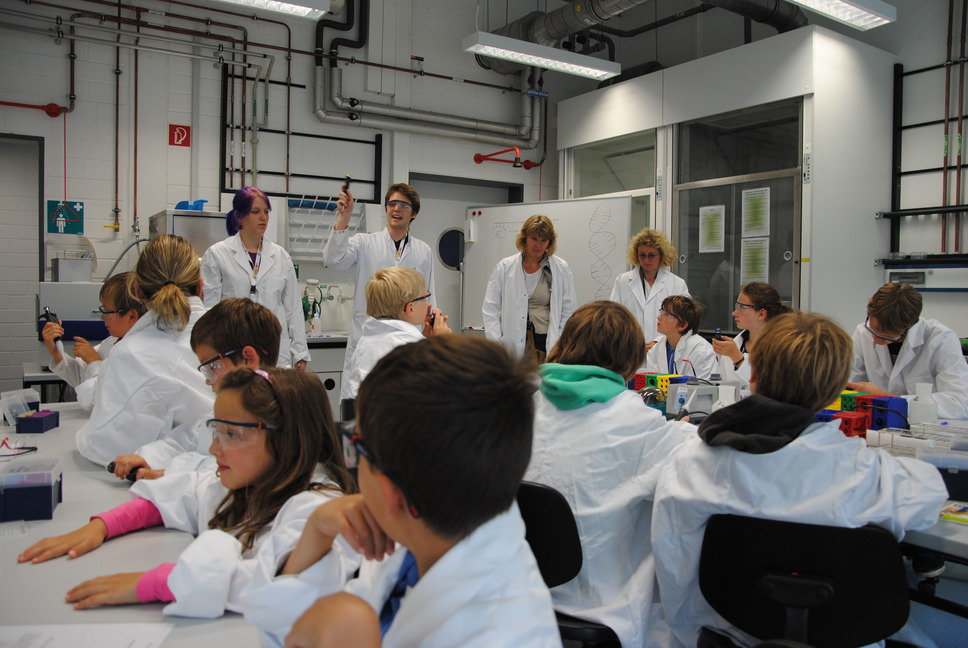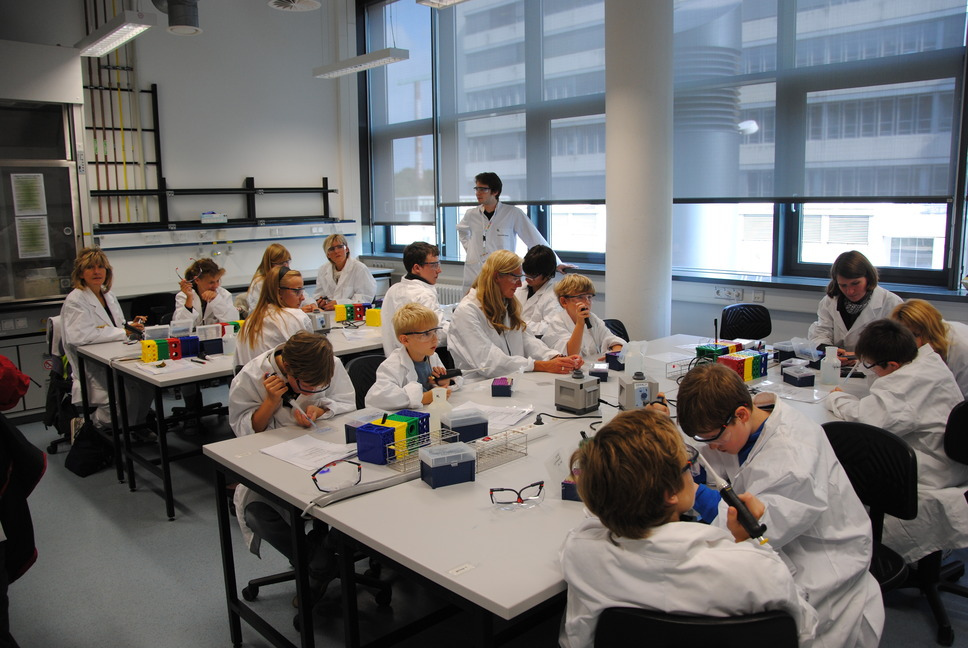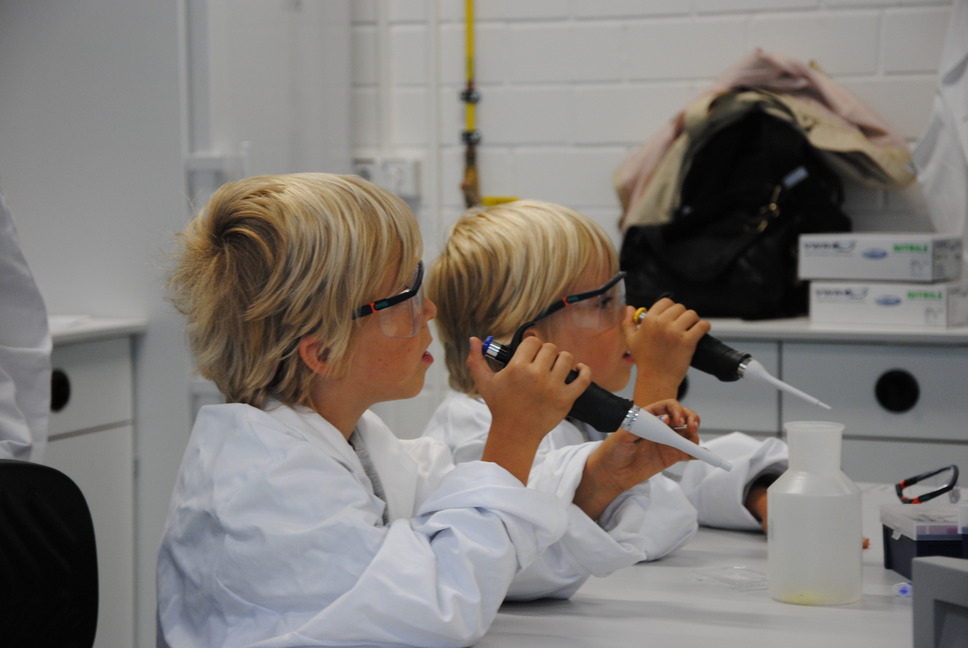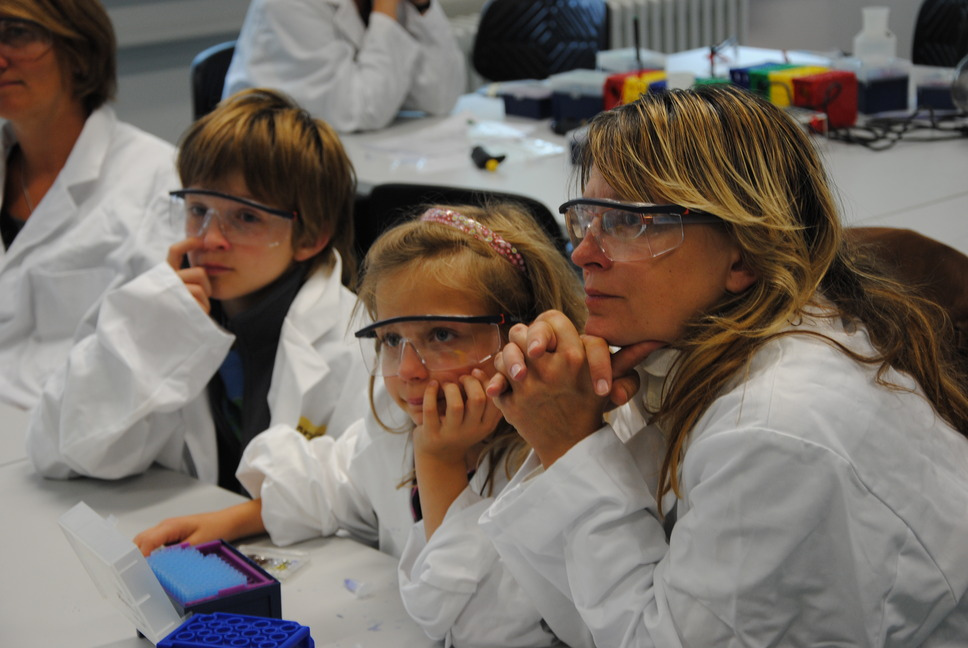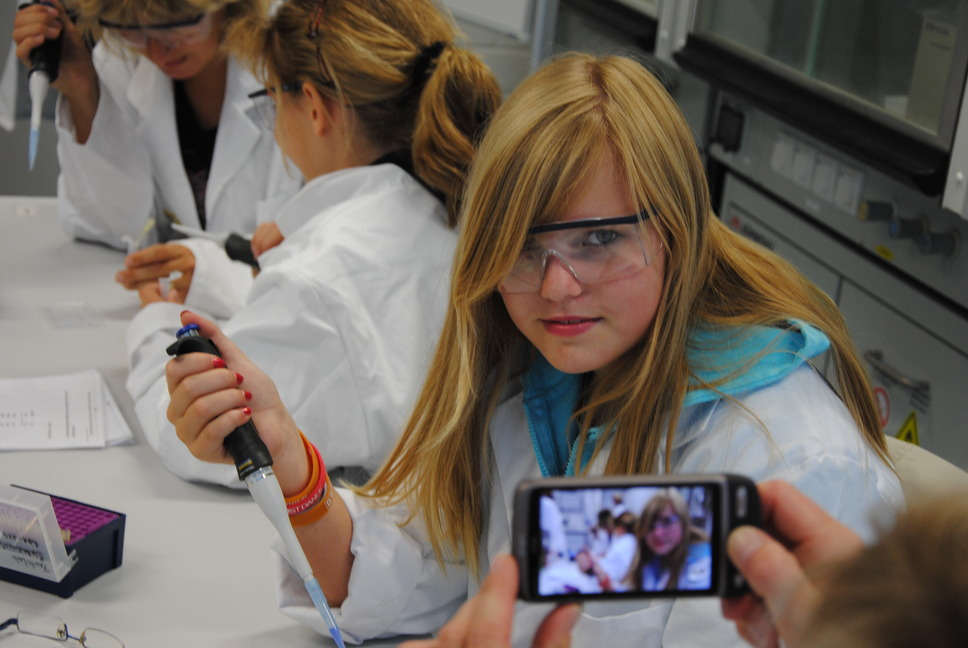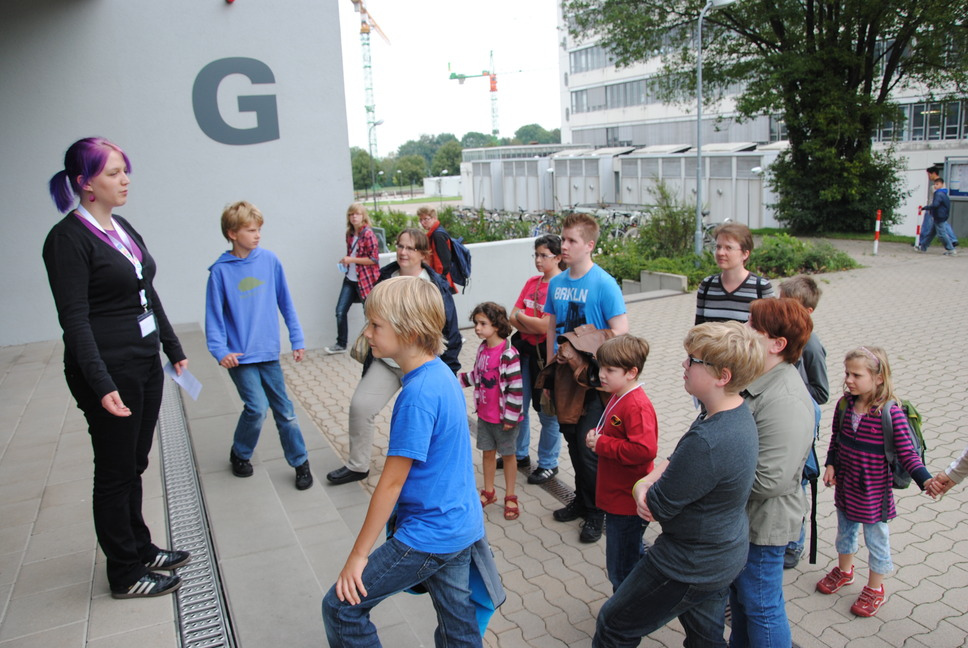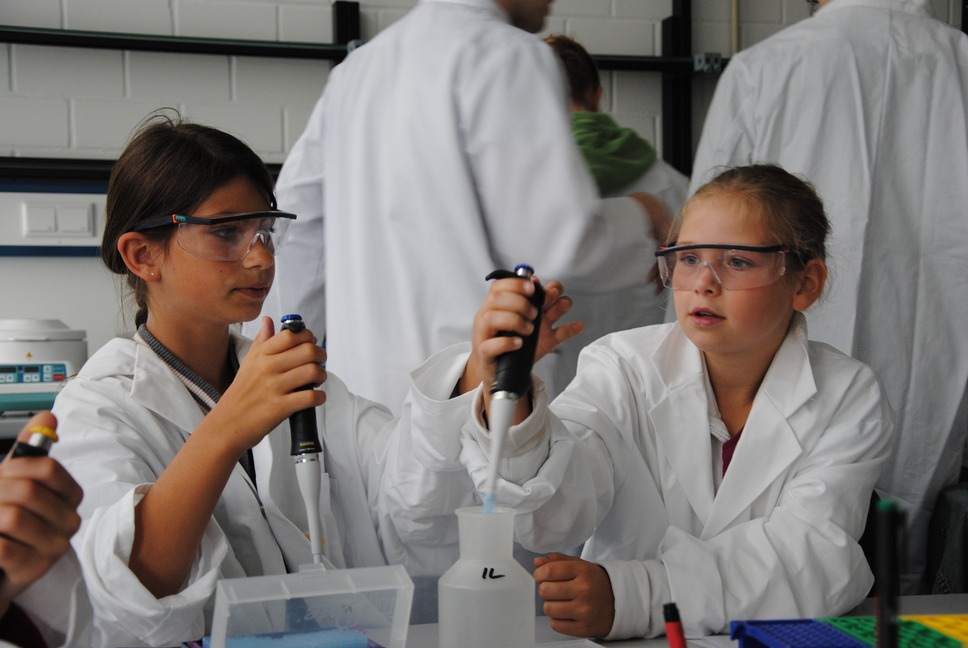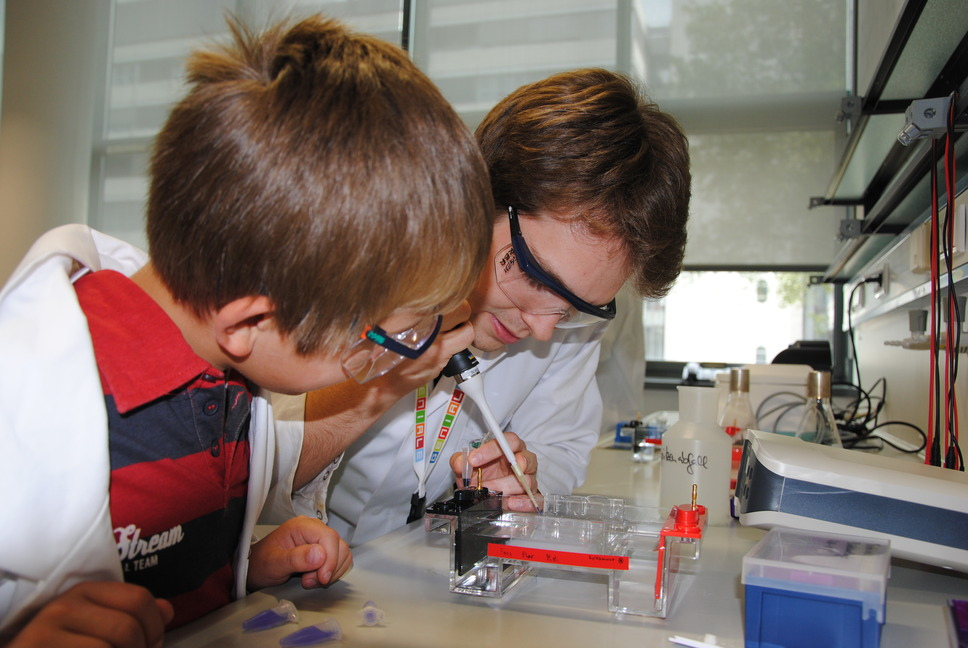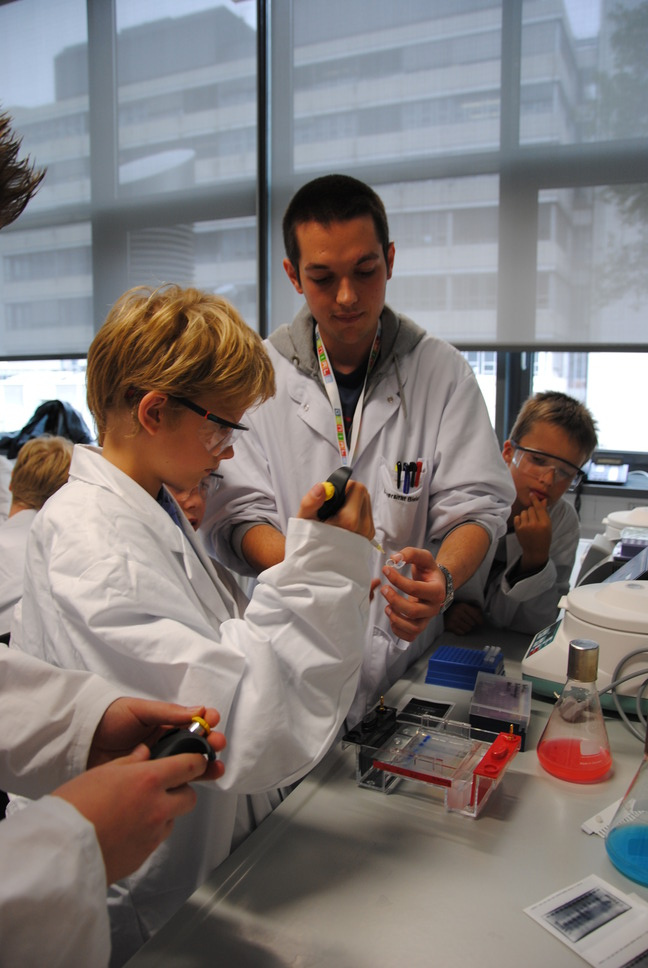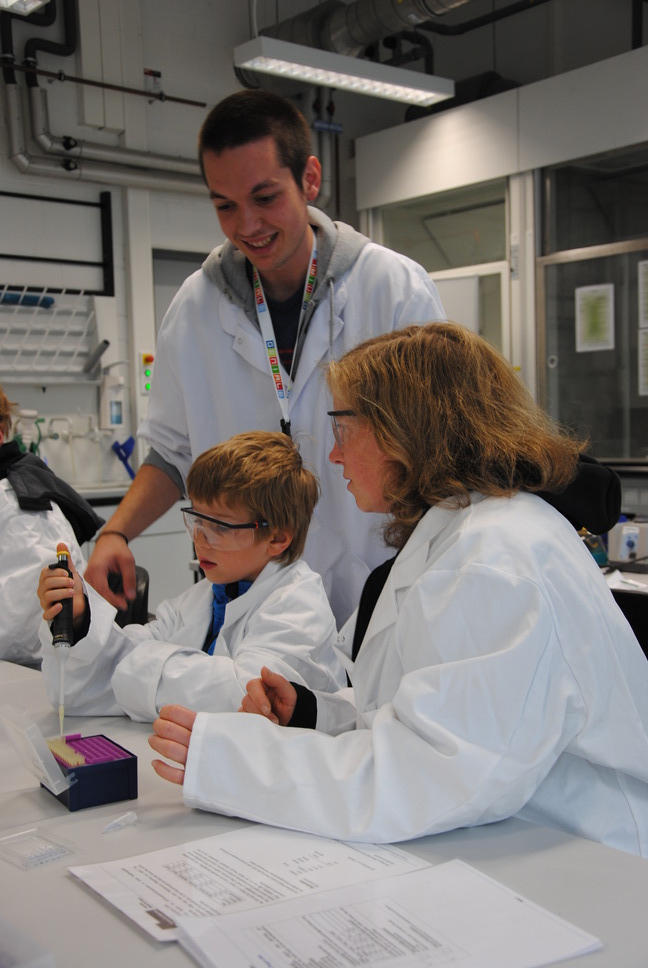Team:Bielefeld-Germany/Human Practices/Geniale lab course
From 2011.igem.org


GENIALE Open Lab Course
One of our goals is an objective science communication in the fields of biotechnology and especially synthetic biology. To improve and expand our outreach we had the opportunity to participate in the [http://www.geniale-bielefeld.de/ GENIALE]. This is one of the biggest European science fairs with over 50,000 participants, funded by the European Union and the federal state of North Rhine Westphalia. The iGEM team Bielefeld took the opportunity to participate with an [http://www.geniale-bielefeld.de/archiv/programm-geniale-2011/detail/date/456/show/Event/ open lab course] for all ages and an in depth [http://www.geniale-bielefeld.de/archiv/programm-geniale-2011/detail/date/295/show/Event/ science café] in the evening.
The GENIALE is an amazing science festival for families in the last week of summer vacation. There are fascinating experiments, spectacular shows, amazing insights and lots of fun. For nine days the whole city is a campus with seven universities and colleges, museums, theaters as well as further institutions attending. This year 50,000 visitors experienced science in a unique way in 450 events at 30 places.
For our event we were able to give lab courses and lab tours for children and adolescents. We picked up eight groups with 20 to 30 people and guided them to a student laboratory (teutolab) next to our iGEM lab. After everybody put on their lab coat and security glasses the children could try out some pipettes with ink. They had lots of fun transferring some blue water from a lab tube to a well plate. While the children could just try out some lab equipment we talked about the molecular basics and applications of our work. We gave the participants the opportunity to load a gel and illustrated the outcome on example gel pictures. Further we explained and showed additional equipment like shaking flasks and thermo cyclers, answered questions and gave a lab tour through our working places in the end. It was a busy day for us because every 30 minutes new enthusiastic and excited children were waiting. But it was worth it, besides that the children as well as we had lots of fun, we were again able to communicate about biotechnology and raised a lot of interest in our work.
 "
"

